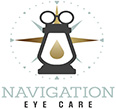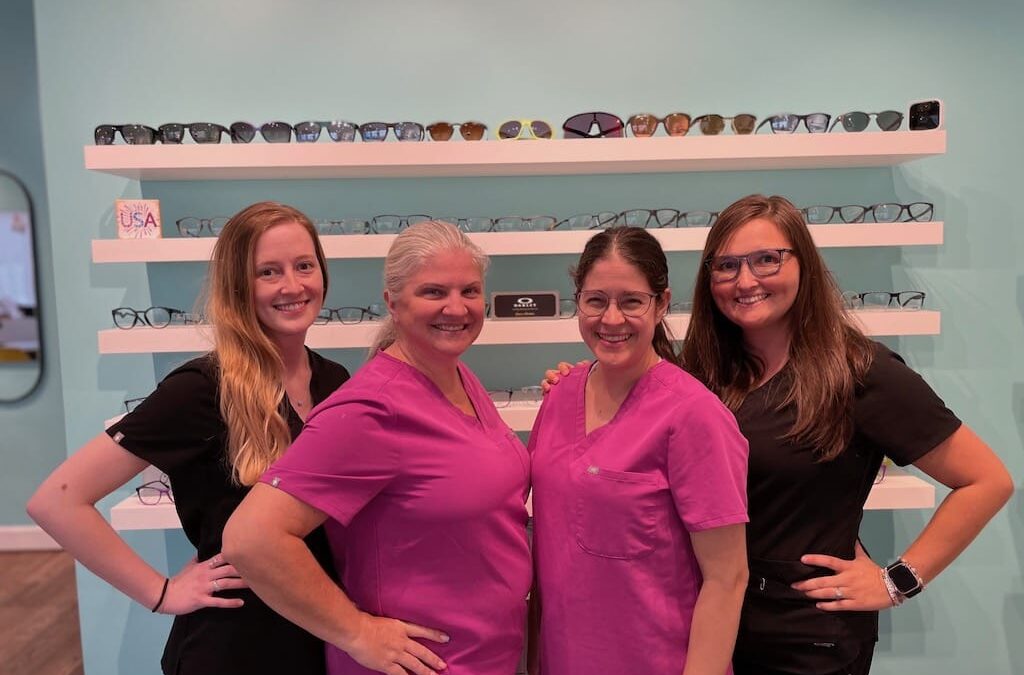Aging Gracefully: Addressing Dry Eyes as We Get Older
Aging is a journey filled with experiences, wisdom, and moments of reflection. As the years pass, our bodies undergo changes, and this includes our eyes. While the aging process brings its own set of challenges, it’s also an opportunity to embrace self-care and prioritize our visual health. One common concern that often arises with age is dry eyes. In this article, we dive into the dynamic relationship between aging and dry eyes, offering insights from Navigation Eye Care’s trusted optometrist Chesapeake VA on how to navigate this aspect of the aging journey.
The Aging Eye: Changes and Challenges
As we age, the eyes undergo natural changes that can impact their comfort and function. The production of tears tends to decrease, leading to dryness and discomfort. Additionally, the composition of tears may change, affecting the quality of the tear film that protects and nourishes the eyes.
Hormonal Changes: Hormonal fluctuations, particularly in women experiencing menopause, can contribute to dry eyes. Reduced estrogen levels can lead to decreased tear production.
Medications: Many seniors take medications that can affect tear production or composition. It’s important to communicate with your healthcare provider about any dry eye symptoms you experience.
Underlying Health Conditions: Certain health conditions that become more prevalent with age, such as diabetes and thyroid disorders, can also contribute to dry eyes.
Lifestyle Factors: Environmental factors like dry indoor air, smoke, and increased screen time can exacerbate dry eye symptoms in aging individuals.
Holistic Approaches for Comfort
While dry eyes may be a common aspect of aging, there are proactive steps you can take to manage and alleviate discomfort.
Stay Hydrated: Drinking enough water throughout the day supports tear production and maintains overall eye comfort.
Blinking Exercises: Consciously practice blinking more often, especially during screen time. Blinking helps distribute tear film and prevent dryness.
Dietary Choices: A diet rich in omega-3 fatty acids, found in foods like salmon, flaxseeds, and walnuts, can improve tear quality.
Environmental Adjustments: Using a humidifier to maintain indoor humidity levels and protecting your eyes from windy and dry environments can help ease discomfort.
Seeking Guidance from Optometrists
While the aforementioned strategies can provide relief, it’s important to seek guidance from Navigation Eye Care’s optometrist Chesapeake VA for comprehensive care. As you age, regular eye exams become even more essential to monitor changes and address concerns promptly.
Professional Diagnosis: Navigation Eye Care’s Optometrist Chesapeake VA can determine whether your dry eye symptoms are age-related or due to other underlying causes. They can recommend suitable treatments based on your unique situation.
Prescription Treatments: In some cases, prescription eye drops or medications may be necessary to manage dry eye symptoms effectively.
Tailored Advice: Optometrists can provide personalized advice on lifestyle adjustments, eye care routines, and strategies to enhance your overall eye health.
Conclusion: Navigating the Aging Journey
As we age, embracing self-care becomes an integral part of the journey. Dry eyes, though common, need not hinder your ability to enjoy life to the fullest. By understanding the relationship between aging and dry eyes, and by seeking guidance from optometrists, you can proactively manage discomfort and prioritize your visual health. Remember, aging gracefully involves not just embracing the passage of time, but also ensuring that your eyes age gracefully alongside you.
Eyes on Safety: Childproofing Your Home to Prevent Common Eye Accidents
A child’s world is full of wonder and exploration, but it’s also important to ensure that their surroundings are safe and secure. Children are naturally curious, and this curiosity often leads them to discover new things by touching, grabbing, and sometimes even putting objects in their mouths. When it comes to eye safety, childproofing your home becomes a crucial step in preventing common eye accidents. In this article, we’ll explore effective strategies to create a safe environment for your little ones, with insights from Navigation Eye Care’s optometrist Chesapeake VA.
Curiosity and Caution: The Balancing Act
Children’s inquisitiveness is a beautiful aspect of their development, but it can also lead to unexpected accidents, particularly when it comes to their eyes.
Common Eye Accidents: Common eye accidents in children include foreign objects entering the eye, accidental scratching, exposure to harmful substances, and more.
Age-Appropriate Measures: Childproofing should be tailored to the child’s age and developmental stage. Toddlers have different needs and risks compared to school-age children.
Creating a Safe Haven
Childproofing your home involves a mix of careful planning, observation, and the implementation of safety measures.
Secure Furniture: Ensure that furniture is stable and won’t tip over. Children often climb on furniture, leading to potential falls that could result in eye injuries.
Cord Safety: Keep blind and curtain cords out of reach to prevent the risk of accidental strangulation or eye injuries.
Safe Play Areas: Designate safe play areas where children can explore without the risk of exposure to hazards.
Chemical Safety: Store cleaning products, detergents, and other potentially harmful substances out of reach and in locked cabinets.
Kitchen Precautions: Use stove guards, keep sharp objects out of reach, and install cabinet locks to prevent access to kitchen hazards.
Preventing Outdoor Hazards
Outdoor playtime also requires careful consideration to ensure eye safety.
Sun Protection: Provide your child with sunglasses that offer UV protection to shield their eyes from harmful UV rays.
Helmets and Gear: When biking, skating, or participating in sports, ensure your child wears appropriate protective gear, including helmets.
Safe Playgrounds: Ensure that playgrounds and play equipment are well-maintained and free from hazards that could cause eye injuries.
Consult Optometrists for Insights
While childproofing your home is essential, seeking insights from Navigation Eye Care’s optometrist Chesapeake VA can provide an additional layer of guidance.
Regular Eye Exams: Regular eye exams help detect and address any eye conditions or concerns that might not be immediately apparent.
Eye Safety Education: Navigation Eye Care can provide valuable education on how to protect your child’s eyes during play and daily activities.
Emergency Preparedness: Optometrists can offer advice on what to do in case of eye accidents and how to administer immediate first aid.
Conclusion: Prioritize Eye Safety
Childproofing your home is a vital step in creating a safe and nurturing environment for your children. By taking age-appropriate measures, securing potential hazards, and seeking insights from optometrists, you can prevent common eye accidents and ensure your child’s eyes are protected during their explorations. Remember, prioritizing eye safety is not just about preventing accidents – it’s about fostering an environment where your child’s curiosity can thrive while their well-being remains safeguarded. If you ever have any concerns about your child’s eye conditions, do not hesitate to schedule an appointment with Navigation Eye Care’s Optometrist Chesapeake VA.

